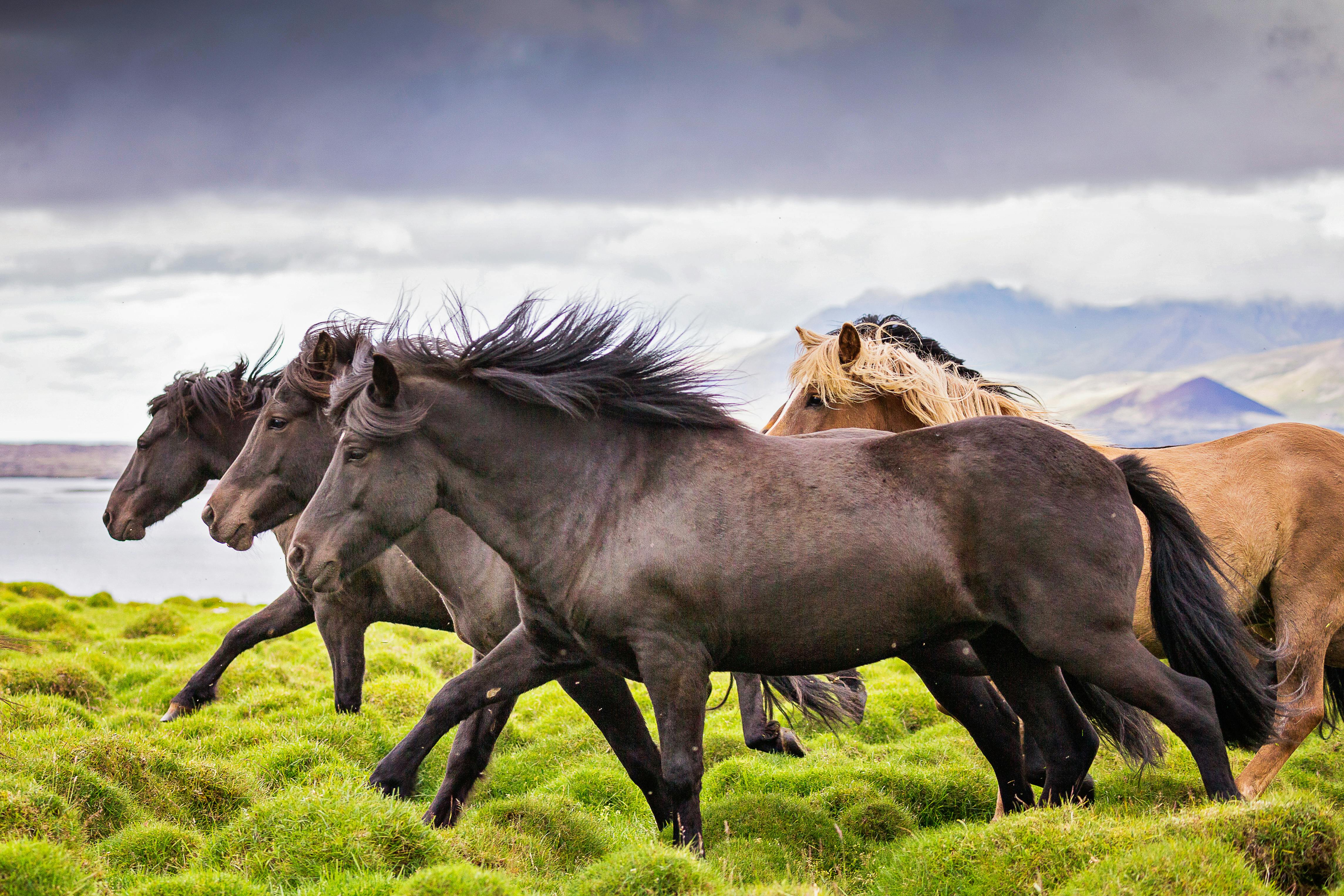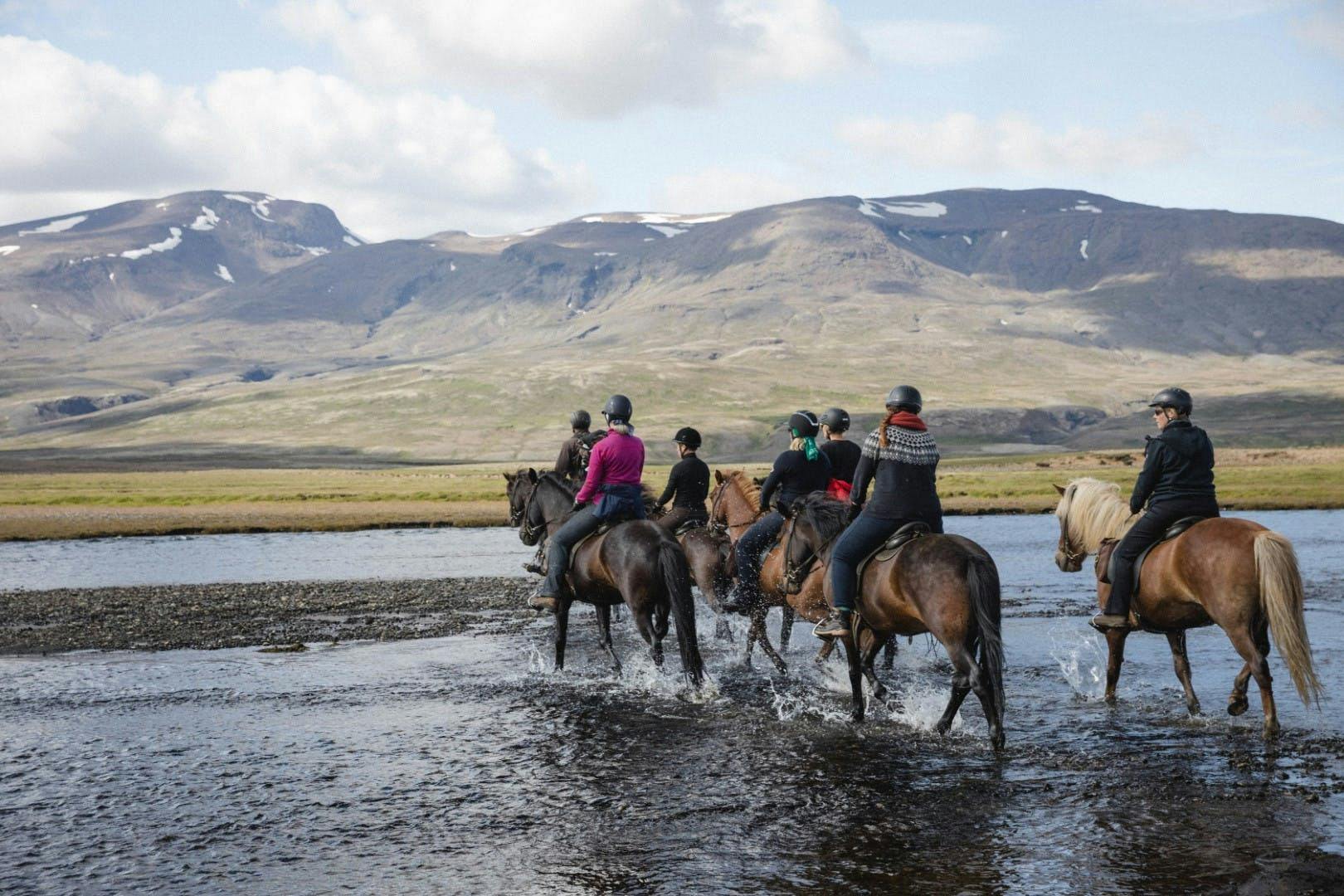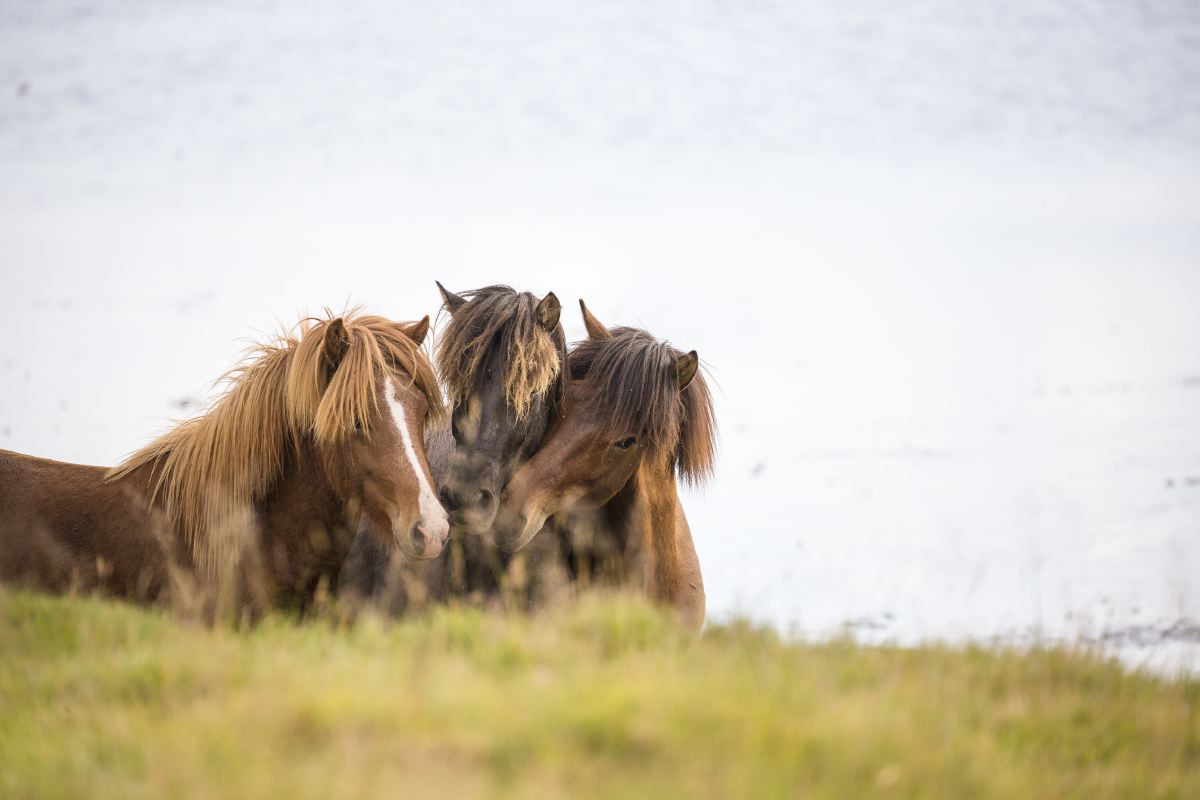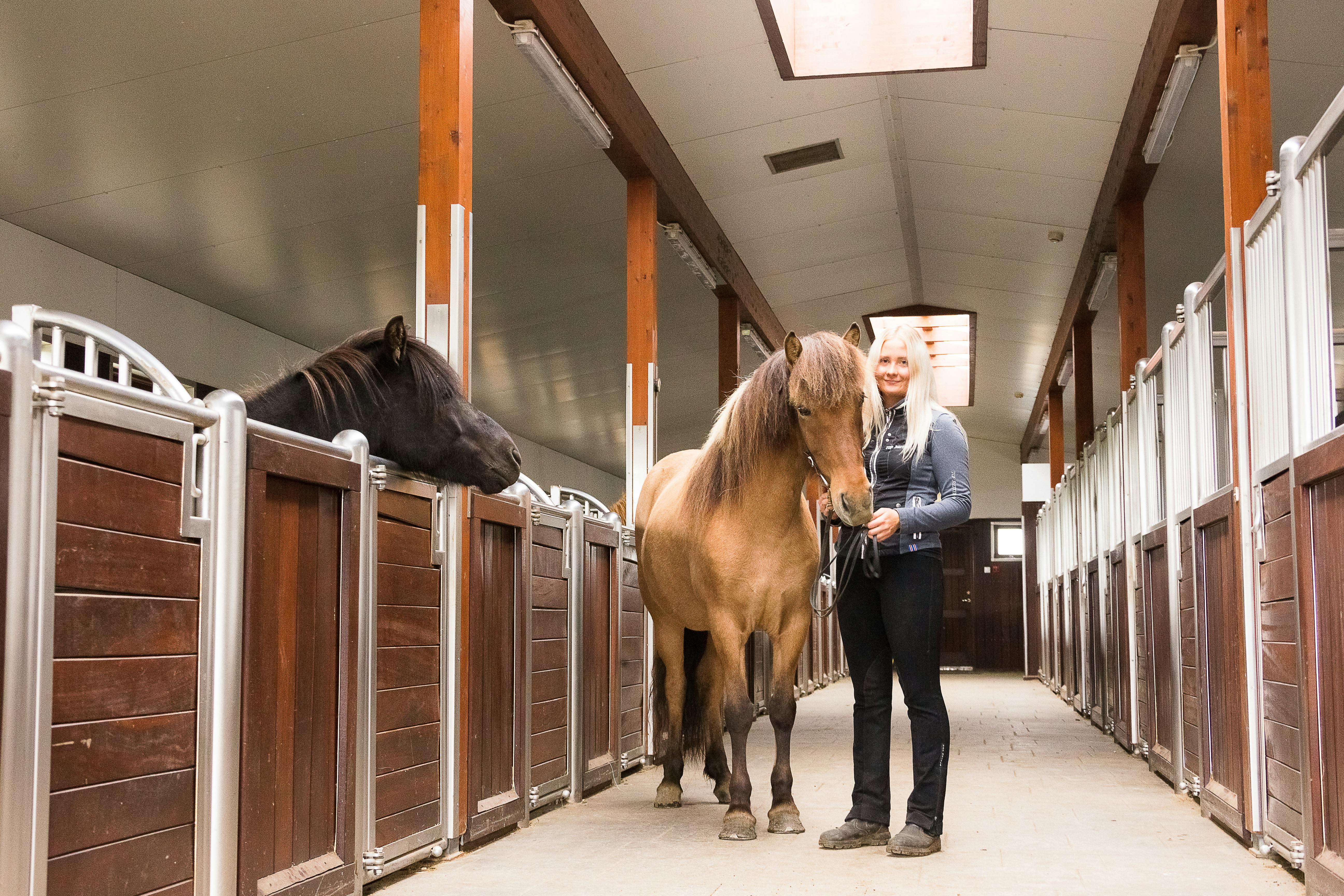
Photo: Christiane Slawik
Good care all year round
Icelandic horses are traditionally kept in big herds while growing up. All over the world, most Icelandic horses are kept outside or in open stables their whole life all year round, and only the riding horses in Iceland are usually in stables over the winter. In spring, as soon as there is enough grass in the pastures the horses are let out to graze through the whole summer and autumn.
In Iceland, in late spring/early summer, people who keep their horses in the same summer pastures like to gather in big groups and ride to those pastures together. This is something many horse people look forward to through the long winter: an extended ride with friends, horses full of excitement, and hopefully nice weather, while honouring the traditional way of traveling. Riders then often leave their horses in the pastures, only to take them back into the stable in late December or early the following year.

Photo: Louisa Hackl.
SUMMER TRAVELS
Other horsemen in Iceland consider summer travels to be the highlight of the year. Throughout the winter, they train their horses for this purpose and spend many hours with friends planning the next summer trip over coffee and biscuits. Summer riding trips can take days or weeks and require extensive planning. Often, people ride into the Highlands and sleep in cabins along the way, which need to be booked in advance. Some of the more popular trips follow ancient routes that were used for travelling between different parts of the country before there were any cars or roads. Riders gather at a predetermined starting point, each of them bringing a few horses. Then they ride into the wilderness. The spare horses run free, lining up behind the riders at the front. A few of the riders stay at the back of the line to make sure all of the loose horses follow. By changing horses regularly, the riders make sure none of them are overworked. After a few days, the horses build up amazing stamina as well as a great joy of running. Both the horses and their riders experience a unique sense of freedom which doesn't compare to anything else.
While horse owners in Iceland usually organise their own trips, riding tour operators all over the country offer tours for people who don't have any horses in Iceland or would rather leave the planning to someone more experienced. One can choose everything between day trips to tours that last several weeks. Going on one of these extended trips through the spectacular Icelandic landscape is the experience of a lifetime. This is the perfect opportunity for the rider and mount to become closely acquainted with each other; man and horse become one. You can find a list of operators on this page

Photo: Christiane Slawik
AUTUMN BREAK
For those horses that are used during the summer, be it for competition or horse travels, the Icelandic tradition is to give them an “autumn break” when they are not ridden for at least several weeks, often 2-3 months. During this time, their shoes get pulled off and they get to roam vast pastures, often in big herds. As the weather grows colder and the horses' hair grows longer to full winter coat, many riders report that their horses change behaviour. They often seem a bit sleepy, play less and have less energy. The horses of Iceland are well adapted to the country's climate. One aspect of that is making the most of the short summer and fall and collect fat so that they can survive the long and often harsh winters. This is the time of year to start working with the youngsters, which are started at 3-5 years under saddle.

Photo: Christiane Slawik
STABLE AREAS IN ICELAND
After the autumn break the anticipation of getting the horses back in training builds up. Iceland is unique in having stable-villages by every single town where the people from that area keep their horses. These stable-villages consist of several stables, mostly privately owned, built right next to each other. Horse owners share the facilities of the stable area which are supervised and maintained by the local riding club. These include trails, oval tracks and pace tracks, as well as outdoor and indoor riding arenas. Many horse owners rent boxes in those stables, meaning that a small community of people gathers in each stable. This makes it easier to have company for going out for a ride together and general team spirit. Very often, owners and boarders take turns in mucking the boxes and feeding the horses. The "kaffistofa" (or coffee-room), is indispensable in every stable and is often set up as a fully equipped (and heated!) kitchen and dining area. This is practical and provides endless opportunities for quick social visits between stables owners and boarders, making the stable-villages real hubs full of life in the midst of winter and all the way to the spring.